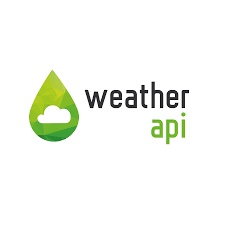Weather forecasts are essential for people around the world to plan their activities and make informed decisions. By leveraging the power of a Weather Web API, developers can create weather dashboards that deliver accurate and up-to-date forecast information to users. We will explore the importance of a Weather Web API for forecast data and guide you through the steps to create a great weather dashboard using this valuable resource.
Understanding Weather API Forecast and Weather Web API:
A Weather API Forecast is a service that provides users with up-to-date and accurate weather predictions for a specific location over a defined timeframe. It utilizes historical data, weather models, and advanced algorithms to generate these forecasts.
A Weather Web API allows developers to access weather data and forecasts programmatically over the internet. It offers a range of endpoints to retrieve current conditions, historical data, and forecast information. Weather Web APIs are designed to be easy to integrate into applications and provide developers with access to accurate and reliable weather data.
Creating a Great Weather Dashboard:
To create a great weather dashboard using a Weather Web API, follow these steps:
-
Choose a Weather Web API: Select a reliable Weather Web API that offers comprehensive forecast services. Look for an API that provides accurate and detailed forecast data for both current and upcoming weather conditions. Weatherstack is an example of a Weather Web API that offers a wide range of forecast data and is trusted by developers worldwide.
-
API Integration: Register for an API key and follow the API documentation provided by the Weather Web API provider. Use the API key to authenticate your requests and access the forecast endpoints. The documentation will guide you through the integration process, including endpoint URLs, required parameters, and response formats.
-
Retrieve Forecast Data: Utilize the Forecast API endpoints provided by the Weather Web API to fetch forecast data for the desired location. Specify the timeframe for which you want to retrieve the forecast, such as hourly, daily, or weekly forecasts. Ensure that the API offers accurate and reliable forecast data, including temperature, precipitation, wind speed, and other relevant parameters.
-
Data Parsing and Formatting: Parse the forecast data obtained from the API response and format it in a structured manner suitable for your weather dashboard. Extract the necessary information such as temperature ranges, weather conditions, and precipitation probabilities. Ensure that the data is organized and presented in a user-friendly format.
-
Visual Presentation: Display the forecast data in your weather dashboard using visual elements such as charts, graphs, or icons. Present the forecast information in an intuitive and visually appealing way, making it easy for users to understand and interpret the weather predictions. Consider incorporating interactive features that allow users to explore different timeframes and toggle between hourly, daily, or weekly forecasts.
-
Real-time Updates: Implement features that enable real-time updates of forecast data. Regularly fetch the latest forecast data from the Weather Web API to ensure that the displayed information remains accurate and up-to-date. Consider implementing automatic data refresh mechanisms or push notifications to keep users informed about any changes in the forecasted weather conditions.
Benefits of Weather API Forecast and Weather Web API:
-
Accuracy and Reliability: Weather API forecast services provide users with accurate and reliable weather predictions based on historical data, weather models, and advanced algorithms. By leveraging a Weather Web API, developers can access forecast data that is constantly updated and trusted for its accuracy.
-
Timeliness: Weather Web APIs allow developers to retrieve forecast data in real-time, ensuring that the displayed information is always up-to-date. Timely access to forecast data enables users to make informed decisions based on the latest weather predictions.
-
Customizability: Weather Web APIs often offer customizable parameters, allowing developers to tailor the forecast data to their specific needs. Developers can choose the desired timeframes, locations, and weather parameters to include in their weather dashboards, providing a personalized experience for users.
-
Integration Flexibility: Weather Web APIs are designed to be easily integrated into various programming languages and frameworks. They provide comprehensive documentation, code samples, and client libraries, simplifying the integration process for developers and offering flexibility in implementing the Weather Web API in different applications and platforms.
Conclusion:
By leveraging Weather API forecast services through a Weather Web API, developers can create great weather dashboards that provide accurate and up-to-date forecast information to users. With access to reliable forecast data, developers can present weather predictions in a visually appealing and user-friendly manner, enhancing the user experience and enabling users to plan their activities with confidence. Start utilizing a Weather Web API to enhance your weather dashboard today and offer users a comprehensive and reliable forecast experience.


No comments yet